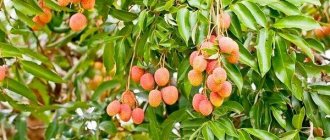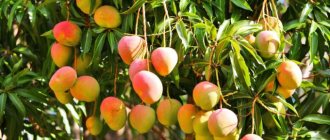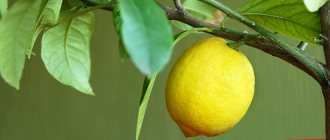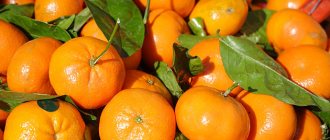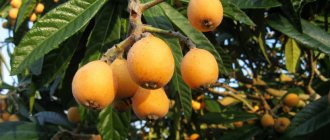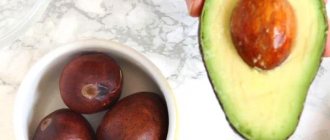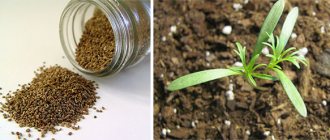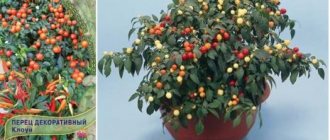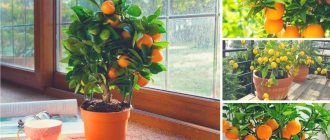Author: Elena N. https://floristics.info/ru/index.php?option=com_contact&view=contact&id=19 Category: Fruit and berry plants Published: June 23, 2018Last edits: April 15, 2021
- Landing in the ground
- Japanese medlar (Eriobotrya japonica)
- Beneficial features
Medlar, or cup tree, or ezgil (lat. Mespilus) is a genus of deciduous plants of the Rosaceae family. According to The Plant List, there are only three species in the genus. The word “loquat” was borrowed from the Turkish language, into which it came from Greek. German medlar, or common medlar, is grown as a cultivated plant; it does not come from Germany, as one might assume, but from South-West Asia and South-Eastern Europe. The medlar was brought to Germany by the Romans. Today, it is found in the wild in Azerbaijan, South Ossetia, Georgia, Armenia, the North Caucasus, on the southern coast of Crimea and even in the central regions of Ukraine. This plant has been grown for more than 3000 years. It was introduced into culture by the ancient Greeks; in the ancient Roman era and the Middle Ages, medlar was already the most important fruit plant. However, then interest in it gradually faded away; it was replaced by other crops, including those imported to Europe from the New World. Nowadays, medlar can be found rarely.
Planting and caring for medlar
- Flowering: late spring or early summer.
- Planting: three-year-old seedlings are planted in the ground in early spring or during leaf fall.
- Lighting: bright light.
- Soil: to fill the planting pit, prepare a mixture of equal parts of turf soil, humus, deciduous soil and sand.
- Watering: as needed, trying to avoid overwatering.
- Feeding: young trees are fed once every 3 weeks, and adults – 2-3 times per season with complex mineral fertilizers or mullein solution.
- Pruning: sanitary cleaning is carried out in early spring, and crown formation begins at the age of four.
- Reproduction: seeds (seeds) and cuttings.
- Pests and diseases: practically not affected.
- Properties: medlar fruits are a valuable dietary product, and a decoction of the leaves of the plant has anti-inflammatory, strengthening and hemostatic properties.
Read more about growing medlar below.
Botanical description
The loquat tree is an evergreen fruiting plant covered with dark gray bark that can grow up to eight meters in good conditions, but usually does not exceed six. The dark green elliptical leaves of the medlar reach a length of 8 to 15 and a width of 3-4 cm. In autumn the leaves turn red. In late spring or early summer, white five-petalled flowers open on the tree, attracting pollinating insects with their aroma. The pear-shaped or spherical medlar fruit, 2-3 cm in diameter, with permanent unfolded sepals, is reddish-brown in color and appears hollow. In garden forms, the fruit can reach the size of an average apple. Even after ripening, the medlar fruit remains hard and sour, and the fruits become edible only after long storage or after frost: they wrinkle, become smaller, softer and sweeter.
In the photo: How medlar blooms
Varieties of fruit tree
Having figured out what medlar is, you should familiarize yourself with what types of wood are used in gardening. This southern culture comes in 3 types, but only 2 of them have gained widespread popularity. These include Japanese medlar, as well as German or otherwise Abkhazian. Both varieties are shade-tolerant, not demanding on soil composition and can easily tolerate drought. But there are also differences between them.
Japanese medlar
Japanese medlar is an evergreen tree 3-5 m high, but there are exceptions up to 8 m. The shoots and branches of the plant are densely covered with a red-gray edge. The leaves are large, oblong, up to 25 cm long and about 8 cm wide. The upper surface of the plates is glossy dark green, the reverse side is grayish with pubescence.
This variety of medlar has a fruiting period that is radically different from other garden trees. Fruits begin to ripen in late May - early June. Their shape can be pear-shaped or round. On the branches the fruits are collected in clusters. The weight of each varies from 20 to 100 g, size is about 7 cm.
The Japanese variety of the crop prefers a warm climate and rocky soil. At a temperature of -15 degrees the plant dies. Therefore, Japanese medlar can only be grown in the southern regions or as a houseplant.
Japanese loquat fruits are similar to apricots
Based on the Japanese medlar, it was possible to develop varieties and hybrids that are distinguished by high taste qualities of the fruit and a pleasant aroma. The most popular of them:
- Tanaka;
- Silas;
- Champagne;
- Morozko;
- Early red;
- Montreal;
- Thales.
German medlar
German medlar is often called Abkhazian, Caucasian or Crimean. This species is considered more decorative, but deciduous. The height of the tree does not exceed 3 m. The plant is easy to care for and has increased frost resistance. The fruit ripening period occurs in November.
For full tree growth, a warm winter and cool summer are necessary. Therefore, this variety can be grown outdoors in regions with a temperate climate.
The taste of the fruits of the German medlar is sweetish, but tart. Therefore, to improve it, it is recommended to remove rounded fruits from the tree after the first frost or put them in the freezer for several days.
Important! There is often confusion when writing the name of this tree, so when choosing murmul or medlar, the latter is correct
Care for medlar at home
Growing from seed
Growing medlar from seed can be done at home. The bone extracted from the pulp is planted no later than three days later. If you purchased medlar seeds in a store, you should understand that a plant grown from them is unlikely to produce a harvest, but medlar from the seed of an eaten fruit will almost certainly bear fruit.
The substrate for medlar can be purchased at the store, or you can make it yourself from equal parts of leaf soil, humus, sand and peat. Fill the pot with drainage holes with the substrate, remembering to first place a layer of expanded clay in it. Medlar seeds are buried 2 cm into moistened soil (up to six seeds can be placed in one pot), after which the surface is covered with film or covered with glass. While waiting for germination, the crops are placed in a warm, bright place, for example, on a windowsill.
- Muscari flowers - description
In no earlier than a month, sprouts will appear, and it will be necessary to shade the seedlings from direct sunlight, ventilate the crops daily and remove condensation from the covering so that the plants are not affected by fungal diseases from dampness. When the seedlings grow to 2 cm, the covering is removed from the pot, and the seedlings are kept at a temperature not lower than 18 ºC. If it's summer, place the pot with medlar on the balcony or terrace, protecting the young plants from gusts of wind, drafts and bright sun. Keep the substrate slightly moist by watering it 2-3 times a week.
Once the medlar has sprouted, its growth will be rapid: in a month the seedlings can grow up to 15 cm, and then, so that they do not interfere with each other, they are planted in separate deep containers with a soil mixture of coarse river sand, peat and humus. Weak seedlings may die after transplantation, but nothing can be done about it - natural selection... And large and strong plants will become even larger and stronger.
About another rare but useful plant - goji
Home medlar will bloom only in the third year after transplanting into a separate container at the end of autumn or early winter, and the first fruits may appear by the New Year. You can shape the crown of your home medlar only after flowering, although this is not necessary: you can give the crown a shape, or you can let it look natural, cutting off only thickening, weak, diseased and damaged branches.
How to grow exotic from seed
To propagate medlar (it is better to take the Japanese variety) in an apartment, they use seeds extracted from ripe fruits. They need to be planted in the ground immediately, because over time they lose half their ability to germinate. If it is not possible to place the grain in the ground, then it can be stored in a wet rag for 2–3 months before planting at a temperature of 4–5 degrees.
The first shoots of eriobothrya appear 30 days after planting the scarified seed
To increase the chances of seed germination, it is recommended to break the integrity of its shell by rubbing it with sandpaper or a file from different sides. Then the nucleolus is filled with clean water at a temperature of 20–25 degrees for exactly one day. If the seed floats up, it is thrown away - it is hollow inside and will not give life to a new plant. The seed can also be pickled in a solution of potassium permanganate.
Each kernel must be planted in a separate pot with a top diameter of 8 cm - ezgil does not like transplants. For planting, a mixture of high-moor peat with mineral additives and microelements, usual for seedlings, is used.
It is very important that the pot has drainage to allow excess moisture to drain out.
The depth of immersion of the seed into pre-moistened soil is small - only 2 cm. Then the container is covered with plastic film or glass to create a greenhouse effect. If condensation appears, the homemade dome is removed and the soil is ventilated to avoid mold.
The crops need to be watered once every two days, and the top layer should be sprayed daily from a spray bottle with pre-softened water at room temperature.
Mango: description, planting and growing from seed at home, possible diseases (Photo & Video) + Reviews
Growing loquat in the garden
Landing in the ground
Three-year-old medlar seedlings grown at home from seed can continue to be grown as house plants or can be planted in the garden. Medlar needs well-drained soil, neutral or slightly acidic, and the plant is undemanding to the composition of the soil. Groundwater on the site should lie no higher than one and a half meters below the surface. If you decide to plant several seedlings at once, keep a distance of 4.5 m or more between them.
In the photo: Fruit-bearing medlar tree
Medlar is planted in open ground when it is at rest, that is, in spring or autumn. Clear the area intended for loquat from weeds and dig it up with bone meal. Prepare a soil mixture of equal parts of coarse river sand, turf soil, humus and deciduous soil. Dig holes one third larger than the volume of the root system of the seedling with a ball of earth. Drive a stake into the center of the hole of such a height that it reaches the lower branches of the medlar, transfer the seedling from the pot into the hole and fill the space with soil mixture. As a result of planting, the seedling should be at the same depth at which it grew in the pot. After planting, water the plant generously, and when the water is absorbed and the soil settles, tie the seedling to a stake and mulch the soil around it with a layer of compost or rotted manure 7-8 cm thick so that the mulch does not touch the trunk.
How to take care of the garden
Caring for medlar is not much different from caring for other fruit crops. How to grow medlar in your garden? You will have to water the plant, trying to saturate the soil with moisture, but not to waterlog it. After watering or rain, it is advisable to loosen the soil in the tree trunk circle and remove the weeds that appear there.
- Growing figs in harsh climates - what must be taken into account?
Tips for growing cherries - from planting to a rich harvest
Medlars are fed 2-3 times per season with both mineral and organic fertilizers, but young plants require more frequent feeding: once every 3 weeks. Of all organic fertilizers, the plant prefers mullein solution.
In early spring, before sap flow begins, it is necessary to carry out sanitary cleaning: remove diseased, broken, frostbitten branches that thicken the crown. For the first 3-4 years, you need to shorten the skeletal branches by a third of the growth per outer bud. The branches intertwined inside the crown are cut to 2-3 buds. From the age of four, the crown of the medlar, like the crown of any fruit tree, is formed, and when the formation is completed, the shape is simply maintained by pruning.
Loquat propagation
You already know how to grow medlar from a seed, but this plant can also be propagated vegetatively - by cuttings. To do this, a cutting 15-20 cm long with two nodes is cut from last year's growth, the lower leaves are removed, and the plates of the upper leaves are shortened by a third. They do this in order to reduce moisture evaporation. The sections are powdered with ash, after which the cuttings are planted strictly vertically in a pot with expanded clay and a peat-sand substrate. The cuttings are buried 4-5 cm. After planting, the soil is watered. Caring for cuttings consists of regularly watering the substrate and spraying the cuttings with boiled water. It will take about a month for the medlar to root, and when you are sure that the plant has grown roots, transplant it into the garden. The further development of the seedling may be very slow, but do not despair: if you meet the conditions for growing medlar, sooner or later the cutting will definitely begin to grow.
In the photo: Formation of medlar fruits
Diseases and pests
Loquat is quite resistant to both diseases and pests, but from time to time it can be damaged by leaf-eating caterpillars. How to deal with them? In the spring, you need to collect all the spider web nests from the tree and burn them. During the budding period, the medlar and the soil around it are treated with a seven percent solution of Karbofos or a three percent solution of Nitrafen or Chlorophos. For preventive purposes, medlar twice a year - in early spring and after leaf fall - is sprayed with solutions of Fitoverm (20 g per 10 l of water), Insegar (5 g per 10 l of water) or Lepidocid (25 g per 10 l of water).
Where did this fruit come from?
The plant is native to China, from where it was later brought to Japan. Today this tree grows in the warm countries of the Mediterranean, Asia, Abkhazia, the Balkans, Turkey and the northern regions of Iran and Transcaucasia. It can reach 8 meters in height, remaining green all year round.
There are two varieties of medlar - Japanese and German. The plant begins to bloom in autumn, and the fruits ripen in spring, usually from May to June. In European countries, this tree was originally grown exclusively for decorative purposes, but today in many regions it is cultivated on an industrial scale.
Types and varieties of medlar
As we have already mentioned, of the three species of the genus, only German medlar, or Caucasian medlar, or Crimean medlar is grown in culture - the plant that we described at the beginning of the article. However, there is also Japanese medlar, or eriobothrya, or loquat, or shesek - a small evergreen ornamental and fruit plant grown both in open and indoor ground. Loquat belongs to the genus Eriobothrya of the Rosaceae family, that is, it is a relative of the German medlar, but in fact is not a medlar.
Japanese medlar (Eriobotrya japonica)
Reaches a height of 8 meters. Both the shoots and inflorescences of the plant are reddish-gray with thick felt pubescence. Oval leathery leaves, glossy on the upper side, sessile or on short petioles, reach a length of 25 and a width of 8 cm. They are also densely pubescent below. White or yellow five-petaled flowers with a diameter of 1-2 cm are collected in terminal paniculate inflorescences. The plant tolerates cold well, and with age its winter hardiness becomes increasingly higher. Of the varieties of medlar (Eriobothrya) Japanese, the most famous are:
- Champagne is a plant with fleecy yellow fruits with delicate pulp;
- Morozko is a variety for growing in a greenhouse or at home, the fruits of which are devoid of astringency;
- Silas is a variety with fruits weighing about 80 g, similar to apricots;
- Tanaka - this plant has pear-shaped fruits, orange-yellow color with pinkish flesh, sweet and sour taste.
In the photo: Japanese medlar (Eriobotrya japonica)
Transplanting sprouts
In order to carry out the transplant, decide whether you want to grow medlar in open ground or at home. Medlar (both types) is not very demanding of the soil, the only thing that needs to be taken into account is that if groundwater is close to it, a small embankment should be made for it, but, in general, this is not a very acceptable option, although the root system does not go very deep into the ground, because the tree is not tall. You can use the most ordinary fertilizer. It is better to transplant in the fall. As mentioned above, medlar can survive frosts, but still it is a warm and light-loving plant, and it does not acclimatize in every region.
If you decide to plant medlar in a pot, then you should prepare the soil in advance. The most ordinary universal soil, pre-treated with fertilizers, will do.
It is important to provide the plant with sufficient moisture. And expect the first color in about four to five years
Medlar in landscape design
Designers plant German medlar, with its spreading and dense crown, for its reddish-brown foliage. Often two or three trees are planted to the north of other plants so that they create a barrier from the cold winter winds, because mature medlar is winter hardy.
- Conditions for growing mirabilis in the garden
Medlar is grown as a central point in a small garden: its magnificent crown is decorative even without leaves, and in the spring it opens flat, saucer-like, fragrant pinkish or white flowers. The medlar will bloom for the second time in August-September, and in the fall the leaves of the plant will turn an unusual reddish-brown or red-yellow hue. Fancy fruits also add to the plant's attractiveness. Decorative throughout the season, medlar can be planted in a row along the garden path, creating a park alley of trees with slender trunks and closed crowns.
Properties of medlar - harm and benefit
Beneficial features
Medlar fruits contain iron, calcium, potassium, phosphorus, iodine, magnesium, zinc, selenium, sodium, fructose, sucrose, citric and malic organic acids, vitamins A, C, B1, B2, B3, B6, B9, pectins, tannins and phytoncides, which promote recovery from gastrointestinal diseases, normalizing intestinal function, relieve pain from stones in the urinary tract and kidneys.
A decoction of unripe medlar fruits relieves inflammation and stops intestinal bleeding. A decoction of leaves collected from flowering medlar has an anti-inflammatory, strengthening, and hemostatic effect. An alcohol tincture is made from the fruits of the medlar, which is used to treat bronchitis and asthma in Japan.
Rich in antioxidants, dietary fiber, fructose and citric acid, low-calorie loquat is often included in the diet. It promotes healing from diabetes, increases the body's resistance to infections, eliminates the symptom of kidney dysfunction, increasing their filtering capacity, removes waste and toxins from the body, improves vision, the functioning of the digestive organs, eliminates intestinal disorders, such as constipation, helps stabilize blood pressure, relieves intestinal colic and prevents runny nose.
In the photo: Medlar is not only a healthy plant, but also tasty
Due to the high content of vitamins, macro- and microelements, medlar is recommended for pregnant and breastfeeding women who do not have an individual intolerance to the product. Masks are prepared from the pulp of the fruit, giving the skin a healthy color, eliminating age spots and smoothing out fine wrinkles.
Various dishes are also prepared from medlar, for example, jams, preserves and compotes. Medlar juice is easily fermented, so it is used to make liqueurs, wine and liqueur. A drink reminiscent of coffee is brewed from medlar seeds.
Contraindications
When introducing medlar into a child's diet, care should be taken as allergic reactions may occur. Loquat and especially its unripe fruits are contraindicated for those suffering from inflammation of the pancreas, gastritis with high acidity and peptic ulcers of the stomach and duodenum. It is also undesirable for these people to drink wine and medlar juice. But jam or preserves made from it have a beneficial effect even on a sick body.
Contraindications
People suffering from:
- problems with the stomach - peptic ulcer, chronic gastritis - and the associated pancreas. Like many other, even non-exotic fruits, medlar is characterized by high acidity. This may cause an exacerbation of the disease,
- from an allergy to the fruits of this plant.
Another important point should be understood. Even if no contraindications have been established, medlar fruits can be harmful if large quantities of these fruits are eaten. The average daily intake in the diet of an adult is no more than 6 pieces.
